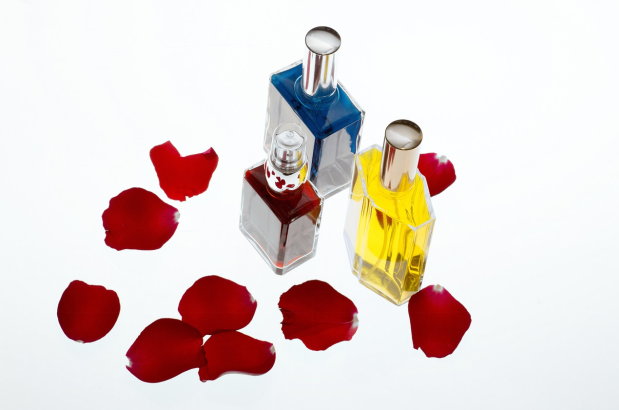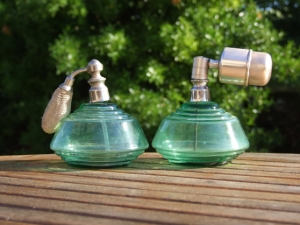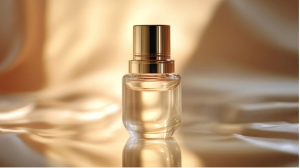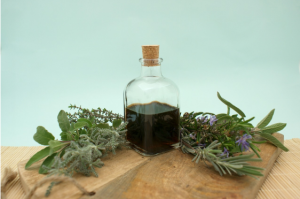Perfume vs Fragrance: What Sets Them Apart?

Have you ever wondered what the difference between perfume and fragrance is?
Or have you ever thought about how a fragrance is made or what goes into making a perfume?
Today, we will uncover everything you need to know about the world of fragrances and perfumes. We will start with understanding what fragrances and perfumes are, their origins, and common types.
Further, we will scrutinize the manufacturing process of perfumes by delving into the ingredients, chemical structures, and art of blending.
Lastly, we will highlight the men’s fragrance market, and current trends in men’s fragrance sales, and ponder if natural home fragrances are the future of men’s fragrances.
So sit back, relax, and join us on this aromatic journey!
Understanding Fragrances and Perfumes
Composed of natural essences and aromatic compounds, fragrances and perfumes vary in scent based on the concentration of fragrance oil. Types such as pure perfume, EDP, EDT, and EDC cater to different preferences and occasions.
They mostly contain a water base with natural ingredients. Whether it’s a single application or a light daywear scent versus an intense evening one, fragrances and perfumes continue to captivate consumers.
Origins of Fragrances and Perfumes
The use of aromatic compounds in ancient civilizations marked the beginning of fragrances and perfumes. Today, the market offers diverse scents, from floral to citrus, reflecting individual preferences.
Over time, perfumes have evolved, incorporating natural and synthetic ingredients, modern blending techniques, and lower oil concentrations suitable for single application or body mists, becoming an essential part of personal grooming.
Common Types of Fragrances and Perfumes
Understanding the right scent concentration levels is crucial for choosing the perfect fragrance. Perfume, Eau de parfum, eau de toilette, eau fraiche, and Eau de cologne each offer a distinctive aroma catering to various preferences and body chemistry.
These concentration levels determine the scent’s longevity, intensity, and suitable occasions, providing insight into individual scent preferences. Categorizing fragrances and perfumes based on the percentage of perfume oil and pleasant odor is essential for informed choices.
Scrutinizing the Manufacturing Process of Perfumes

The manufacturing process of perfumes hinges on fragrance concentration, oil base, and natural ingredients. Perfumes are crafted by blending fragrance oils, natural essences, and aromatic compounds.
During manufacturing, the scent is either intensified or diluted based on the desired fragrance type. The crucial perfume blending procedure involves mixing natural essences, aromatic compounds, and fragrance oil bases to create new scents, ensuring the right aroma.
Ingredients and Chemical Structures in Perfume
Perfumes contain a lower fragrance concentration, making them suitable for light spray composition and daywear scents.
The fragrance oil, natural ingredients, and aromatic compounds define the perfume’s DNA, impacting its scent and longevity. Blending perfume essence and natural ingredients creates aromatic compounds, giving each perfume its pleasant odor.
Understanding the composition and aroma types of perfumes provides insights into scent preferences and suitable occasions. The FDA regulates fragrance concentration, natural ingredients, and synthetics to ensure safety and quality.
The Art of Perfume Blending
The process of perfume blending involves the artful combination of fragrance oil, natural essences, and aromatic compounds to create entirely new scents. This craft is heavily influenced by the perfume’s fragrance concentration, oil base, and aroma type, ultimately defining its scent, intensity, and longevity.
Perfume blending demands expertise in scent composition, natural ingredients, and aromatic compounds to ensure the perfect aroma and lasting scent.
Perfumers carefully utilize fragrance oil, natural essences, and aromatic compounds to cater to diverse scent preferences and individual body chemistry. The concentration of fragrance, scent composition, and natural ingredients significantly contribute to the art of perfume blending.
Perfume vs Fragrance: What’s The Differences?

Perfume and fragrance are terms often used interchangeably, but they can have nuanced differences depending on the context.
Let’s explore the distinctions between perfume and fragrance:
1. Definition:
- Perfume:Specifically refers to a scented liquid created by combining various aromatic compounds, fixatives, and solvents. It is a concentrated fragrance designed for personal use, often associated with luxury and higher-end scents.
- Fragrance:A more general term that encompasses any pleasant or distinctive smell. It can refer to scents found in various products, including perfumes, colognes, body sprays, and even non-personal products like candles or air fresheners.
2. Concentration of Aromatic Compounds:
- Perfume:Has a higher concentration of aromatic compounds compared to other scented products. The concentration may vary, but perfumes are generally more potent and longer-lasting.
- Fragrance:The term “fragrance” doesn’t specify the concentration of aromatic compounds. It can be used broadly to describe scents regardless of their strength.
3. Product Types:
- Perfume:Specifically denotes a product created for personal fragrance. Perfumes come in various forms, including Eau de Parfum, Eau de Toilette, and more, each with a different concentration of aromatic oils.
- Fragrance:A more generic term that can refer to a wide range of scented products, including perfumes, colognes, body sprays, lotions, and even scented household items.
4. Naming and Marketing:
- Perfume:Often used as a marketing term to denote a higher-end, luxury product. The term “perfume” can be associated with a certain level of craftsmanship and exclusivity.
- Fragrance:Used broadly to describe scents in various products without necessarily conveying the exclusivity or concentration of aromatic compounds.
5. Cost and Perception:
- Perfume:Generally priced higher than lighter formulations like Eau de Toilette or body sprays. The cost reflects the higher concentration of aromatic compounds and the perceived luxury associated with the term “perfume.”
- Fragrance:The cost of fragrances can vary widely based on the brand, ingredients, and type of product. It may not necessarily correlate with the concentration of aromatic compounds.
6. Application and Usage:
- Perfume:Specifically designed for personal application on pulse points like the wrists and neck. Perfume is a more concentrated form of fragrance, requiring less product for a potent effect.
- Fragrance:Encompasses various scented products meant for personal use, home, or industrial settings. The application method can differ based on the specific product.
Understanding these differences can guide you in choosing the type of scented product that aligns with your preferences in terms of concentration, application, and overall olfactory experience.
Whether opting for a specific perfume or a general fragrance, each choice contributes to your unique scented journey.
Are Natural Home Fragrances the Future of Men’s Fragrances?
Natural home fragrance is gaining popularity, offering pleasant odors and natural essences. The future of men’s fragrances may include natural ingredients and light application of perfume, catering to modern scent preferences. The market is shifting towards natural essences and lighter scents for daywear.
Delineating Men’s Fragrance Market

The men’s fragrance market presents an array of masculine scents, catering to diverse aroma preferences and body chemistry. From citrus to sandalwood, patchouli, lavender, and jasmine, men’s fragrances reflect individual scent choices and personality.
They are available in various types, including eau de toilette, eau de parfum, and eau fraiche, suitable for different occasions and daywear scents. Understanding perfume types and fragrance concentration is crucial in choosing the right men’s grooming scent.
Current Trends in Men’s Fragrances
Evolving men’s fragrances focus on natural ingredients, aromatic compounds, and light spray composition for daywear scents. They offer diverse scent types, from floral to citrus, sandalwood, patchouli, lavender, jasmine, amber, and cinnamon, appealing to various aroma preferences.
Men’s fragrances with lower fragrance concentrations and natural essences provide a pleasant odor and light application.
Incorporating natural ingredients and synthetics reflects modern scent preferences and body chemistry. Understanding market trends is essential for choosing the right scent.
Conclusion
While fragrances and perfumes may seem interchangeable, there are distinct differences between them. Fragrances encompass a broader category that includes various scented products, while perfumes specifically refer to highly concentrated fragrances.
Understanding the manufacturing process and the different types of fragrances and perfumes can help you make informed choices when selecting your preferred scent. Additionally, the men’s fragrance market is evolving, with current trends showcasing unique and bold aromas.
Moreover, natural home fragrances are gaining popularity, suggesting a potential future shift in men’s fragrance preferences. Whether you’re looking for a signature scent or exploring new fragrances, understanding the nuances between perfumes and fragrances will guide you towards finding the perfect scent that suits your style and personality.




